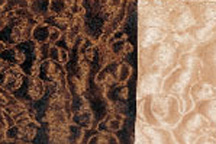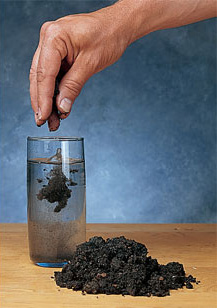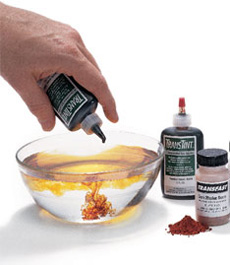
The two most common coloring agents in stain are pigment and dye, and they behave quite differently.
After you have properly prepared the surface of the wood to accept a finish, the next step is to determine if you wish to change the wood’s color… and if so, which product to use.
Although color change is its primary function, stain can also intensify or diminish the grain of the wood, depending on the type of wood and the type of stain you use. Therefore, it is important to understand how different types of stains work.

In simple terms, pigment is colored dirt ground up into small particles. Dyes are typically soluble salts. Once mixed with their proper solvent, dye crystals dissociate into individual molecules, which are vastly smaller than ground up pigment particles. Thus, dye can get into spaces where pigment can not.
Apply a typical pigment stain to dense, figured maple and most of it will wipe right off with little color change. Use dye and you get both more intense coloration and grain contrast. With oak, just the opposite is true. Pigment lodges in the large pores of oak, creating contrast, while dye colors it with boring uniformity. Thus, dye is best for adding intense color to dense wood, whether for grain enhancement or simple color change, but pigment does a better job of bringing out the grain pattern in large pore woods.

One Step Stain and Finish
Lately, companies have been offering tinted finishes with names like “One Step Stain and Polyurethane” in both oil- and water-based modes. A similar material, colored Danish oil, has been around for years. The idea is that you can apply both stain and finish in one step.
Most work great on the first coat; you flood it on, wipe it off, and it acts like stain. Do it again and you have something akin to double staining, but the real advantage is that unlike stain, you can add as many coats of tinted topcoat as you like. Hence, you can keep making the color more intense, and more opaque as well.
Although tinted topcoat on wood looks slightly different than stain, applying multiple coats is an easy way to creep up on just the color you want, especially with darker colors. However, each coat adds color. That means if you do not apply it very uniformly, you will get uneven coloration. It’s best to practice with these materials first. Also, don’t be afraid to use these tinted materials for one or two coats until the color is just right, then switch to the clear version of the same finish for the remaining coats.





